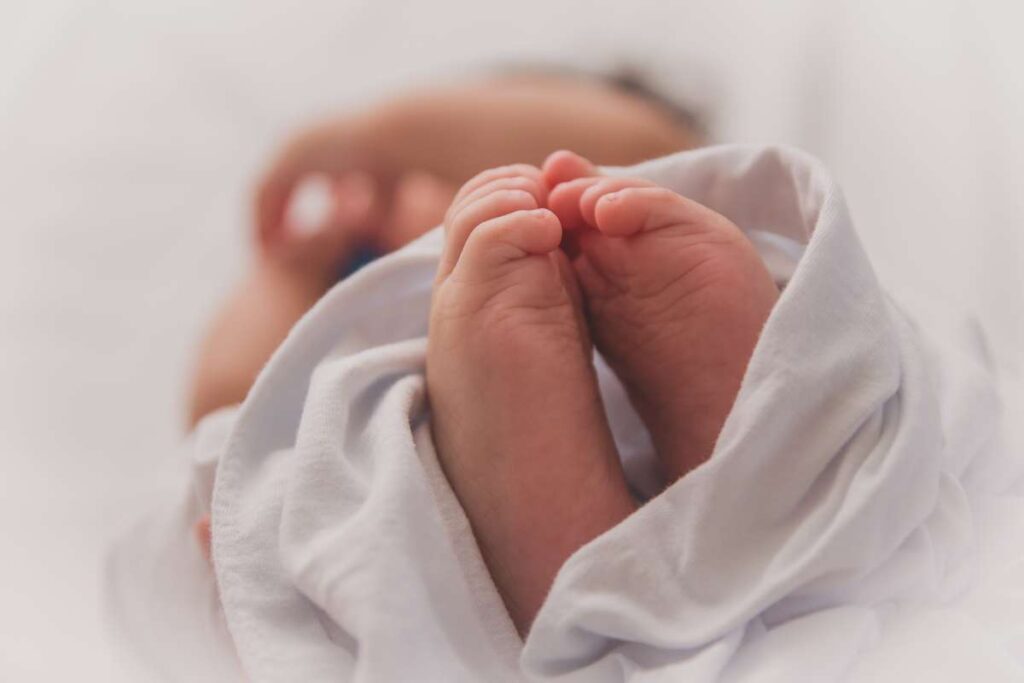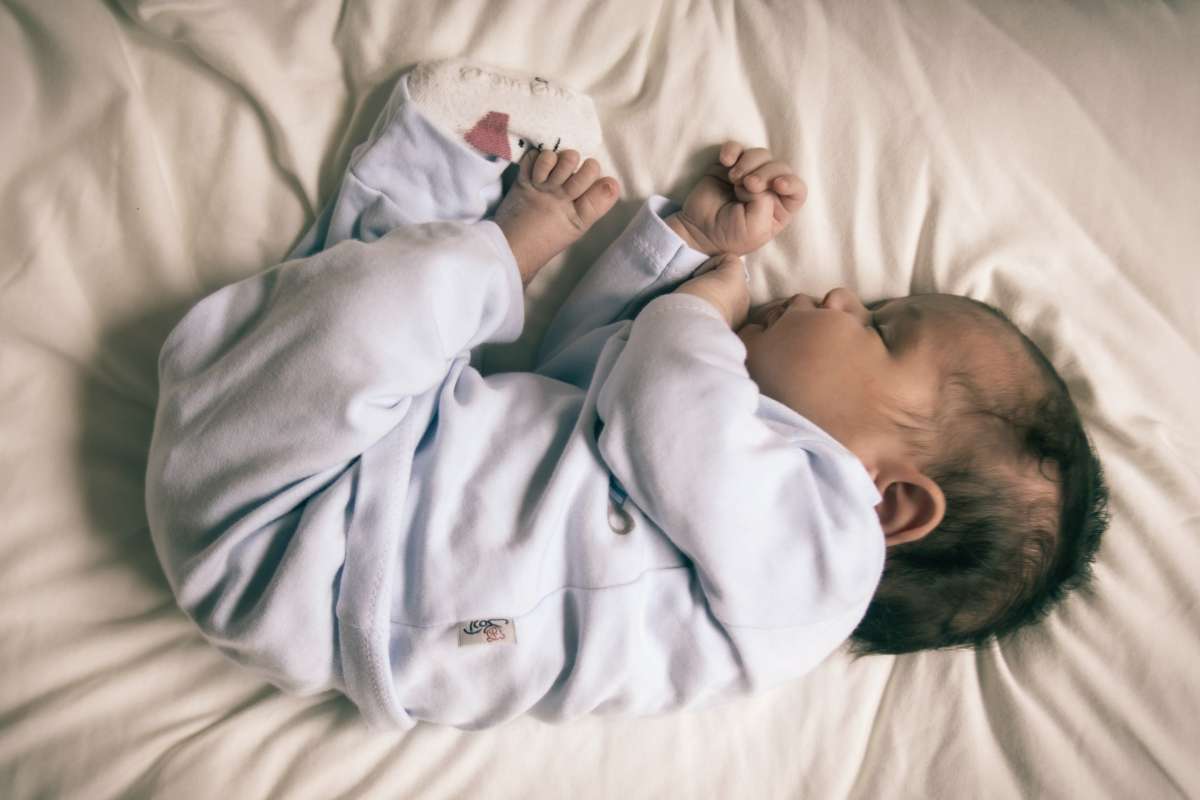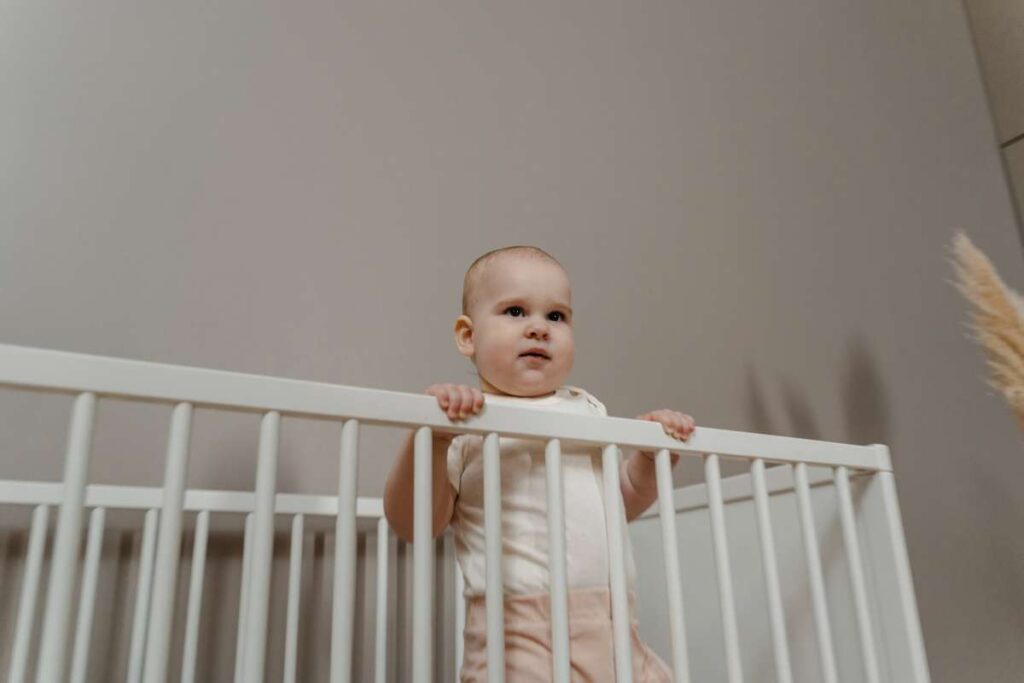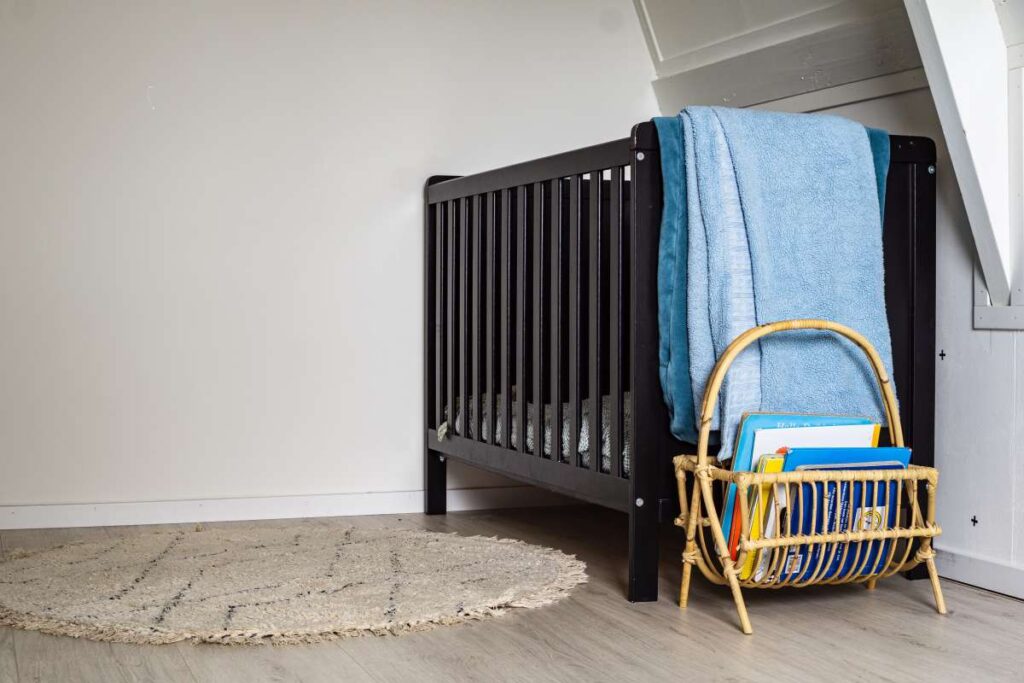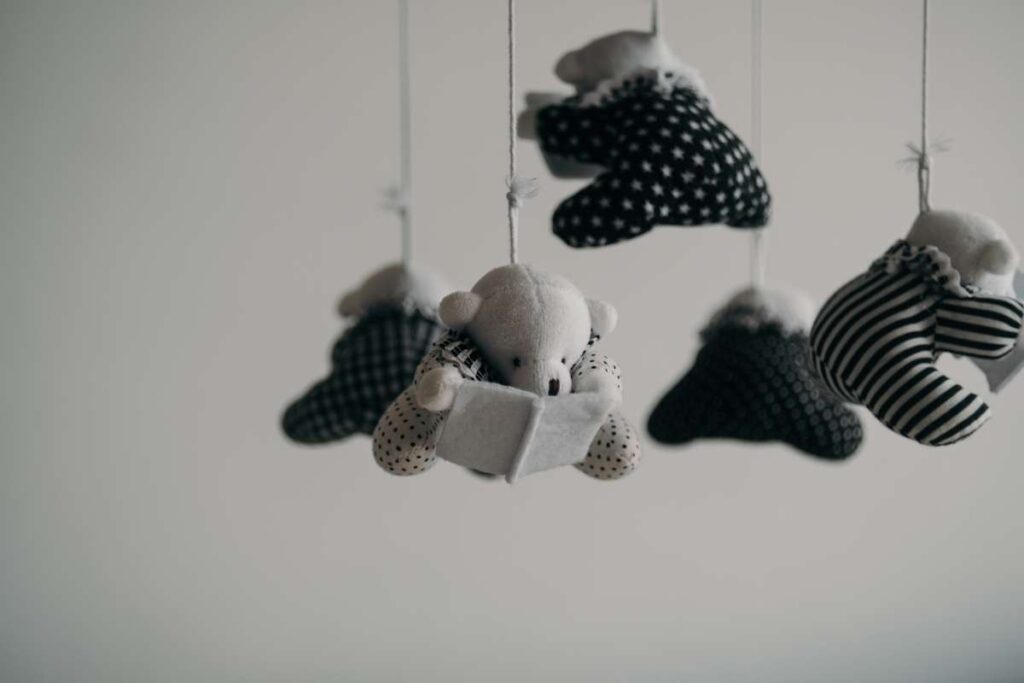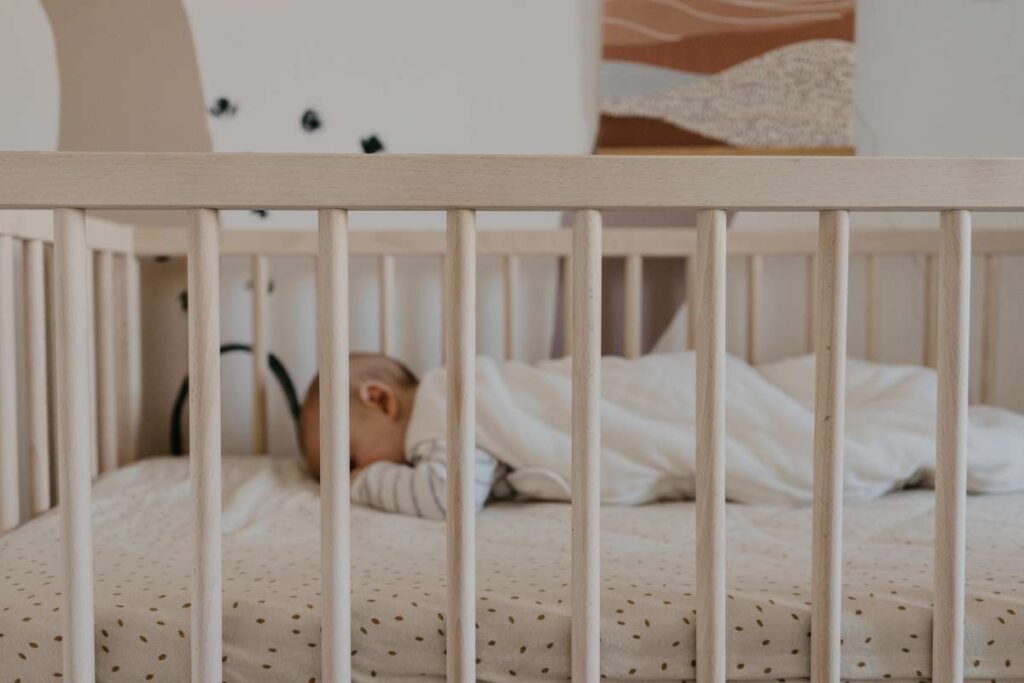Gifts of handmade baby quilts are especially meaningful because of the freedom to incorporate meaningful colour schemes, designs, or fabrics. Also, the effort you put into crocheting a special blanket for a newborn speaks volumes about how much you value that life. This comprehensive guide on baby quilt sizes can help you decide what size to make your blanket.
Newborn or baby quilts that measure 30" x 40" and preemie quilts that are 30" x 30" are the most commonly purchased sizes. A crib quilt that measures 36" x 56" is just right for infants and toddlers. A 50-by-65-inch lap blanket or spread is cosy for babies and their parents alike.
This article includes various helpful charts to assist you in determining the appropriate dimensions for your baby quilt. The four most typical baby quilt sizes will be covered. At last, you'll learn how to make a baby quilt, along with advice on which materials to use.
The Most Common Size For Baby Quilts
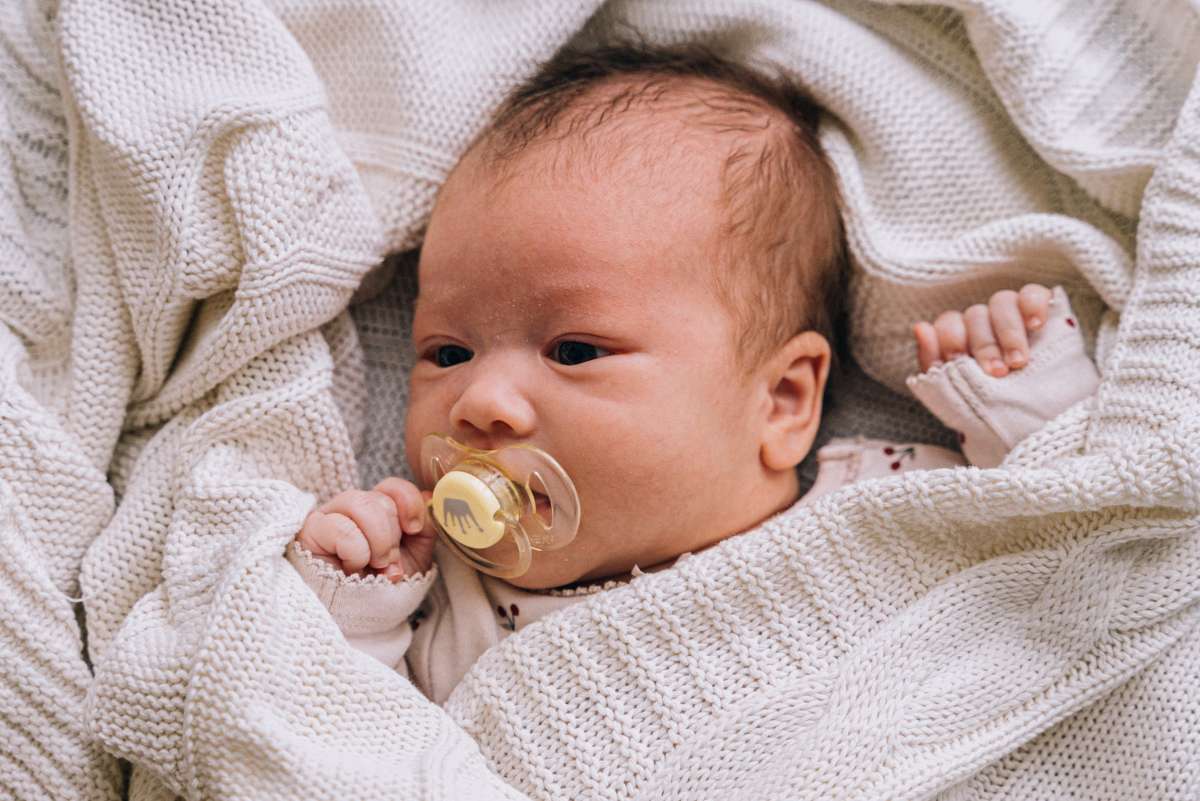
30″ X 30″
Babies of all sizes can fit comfortably in this snug garment. If the size doesn't hold up forever, that's only more motivation to make another quilt, right? the quilt can be used as a play mat or as a "just in case" quilt when your baby no longer needs it as a blanket. When you make a 3030-inch quilt, what is one of the finest parts? To make the backing, you need only one yard of cloth.
30″ X 40″
This lengthier quilt is ideal for individuals who like a more traditional shape for their crib. The backing can still be made from yards without any complicated piecing.
36″ X 52″
This is the normal size since it can easily accommodate a regular size crib mattress (generally 28 inches wide by 52 inches long). But remember, the American Academy of Pediatrics advises against using any bedding in the crib, including sheets and blankets, for the sake of the baby's safety. Size of the crib is secondary to how much the parents like the look of it.
Floor coverings larger than 36 inches square or 72 inches in length and width are ideal for mobile infants, and larger quilts will be utilised once the baby outgrows his or her crib and starts using bedding.
However, the size of the quilt as a whole should be taken into account when deciding on the ideal square size for a baby quilt, which is often between four and five inches. Make sure the overall area can be evenly divided into the quilt squares.
Common quilt square sizes range from 6" to 12". Also included are some well-liked designs for 10-inch-square baby quilts.
How many squares should you use in your quilt?
You may quickly determine how many squares you'll need for your quilt if you follow this simple formula: You should begin by multiplying the quilt's vertical and horizontal side lengths. This will give you the square footage of the quilt.
The next step is to calculate the square quilt's area. Multiply 5 by 5 to get a square that's 5 inches on each side.
At last, you can calculate how big each square is in relation to the entire quilt. To calculate how many 5" squares you'll need for a 30" x 30" quilt, use the following formula:
30 X 30 = 900
5 X 5 = 25
900 ÷ 25 = 36
Thus, a quilt with a finished 30" width would require 36 5" squares.
Let's say you find the calculations tedious. Free quilting calculators like the one presented here are readily available online. For more precise results, some quilting calculators will take into account the seam allowance you've chosen for each of your quilt blocks or blocks.
Sizes Of Standard Baby Quilts
Baby quilts come in four common sizes: infant, crib, toddler, and lap. A quilt produced by hand can be constructed in almost any size. However, if you stick to a commonly used size, you'll have a much easier time locating tools to help you cut out and plan your quilt.
The age of the baby can help you decide on the best quilt size. Baby quilts, for instance, are often little squares, whereas toddler quilts are available in larger rectangles.
Newborn And Preemie Quilt
A 30” square is the standard for a newborn or preemie quilt. There are, however, a few variants on this. The World Health Organization suggests using a quilt no larger than 22 inches square for premature infants, but the American Academy of Pediatrics prefers a larger blanket measuring 30 inches by 30 inches.
A quilt measuring 30 inches square is also a thoughtful present for parents-to-be, who can use it for the newborn either in the hospital or on the car ride home. This size is convenient for navigating with diaper bags and strollers and other "baby stuff."
The backing of this baby quilt doesn't need to be pieced together like it would be for a larger quilt because of the quilt's small size.
In addition, the quilt-blocking procedure is streamlined when the finished quilt is square.
The 30" by 40" rectangle is a close second for the most popular size of baby quilt for infants. If you're more into a rectangular quilt, the extra space will allow you more room to play with design options.
Crib Or Cot Quilt
Generally speaking, the mattress in a baby crib or cot will be a standard size, thus a standard size quilt, measuring 36 inches wide by 52 inches long, will be suitable. Because it is so much larger than a typical baby blanket, this quilt will likely grow with the child from birth to early childhood.
However, please be aware that many professionals advise against putting infants to sleep with thick quilts or blankets. Until the infant is six months old or more, a crib quilt like this one is mainly for decoration in the crib.
While a baby may quickly outgrow a quilt that measures just 30 inches square, this generously sized crib quilt will provide warmth for years to come. The quilt is large enough that parents can use it as a throw for their laps or a floor mat for their children.
Toddler Quilt
Quilts for toddlers typically measure 46 inches by 70 inches to accommodate the industry requirement for such beds. However, many toddler quilts are either the usual crib quilt size of 36 inches by 52 inches or a rectangle as huge as 70 inches by 90 inches, again, depending on the size of the toddler's bed.
Ages two and up are considered to be toddler years. Making a toddler quilt is a great idea if you want to give a present that will be treasured for years to come.
Obviously, you'll need to think about the fact that you'll require extra fabric to make such a vast blanket. One and a half to three quarters of a yard of fabric for the top, plus batting and backing, is approximately right for a toddler blanket.
Lap Quilt
A lap quilt is typically 46 inches wide by 60 inches long, but you'll find a wide range of sizes available for this particular design. The reason is that this quilt is not intended to cover a conventional bed. Instead, it can be used for parental cuddling with the newborn!
The only requirement for a lap quilt is that it should be large enough to comfortably cover both the parent and the youngster. Using a more common size, like 46" x 60", has the advantage that free patterns and quilt blocking designs are more readily available online.
In addition to the standard dimension of 36 inches by 48 inches, a 36-inch square is another common shape for a lap quilt. Besides being used as a blanket for the infant, a quilt measuring 36 inches square is often used as a rug or playmat.
It's possible to whip together a simple lap quilt if you're in a hurry, but if you have the time and patience, you can also produce lap quilts with really elaborate, creative motifs. Some of the time, these blankets don't get put through as much wear and tear as a crib quilt or a newborn quilt, so you can spend more time making them gorgeous.
- Crib — Baby quilts are normally between 30 inches (76 cm) wide by 46 inches (117 cm) long and 36 inches (91 cm) wide by 50 inches (127 cm) long. They are standard size and will accommodate mattresses that have the specified width and length.
- Full — To get started, a full-size quilt should be at least 70 inches (178 cm) wide by 88 inches (224 cm) long, and preferably 88 inches (224 cm) wide by 100 inches (254 cm) long. It's all in the drape, once again.
- Queen — A standard queen-size quilt will have a width and length of 99 inches (or 252 centimetres) and 108 inches (or 274 centimetres).
- Baby — The standard size for a baby quilt is a square measuring anywhere from 36 inches (91cm) by 36 inches (91cm) to 52 inches (132cm) by 52 inches (132cm). On the coldest winter day, a blanket with any size or any size in between will keep the infant toasty.
- Twin — The standard dimensions for a twin-size quilt are 64 inches (163 centimetres) wide by 86 inches (218 centimetres) long, although larger sizes are possible (up to 72 inches (183 centimetres) wide by 96 inches (244 centimetres) long for a more generous drape over the sides of the bed.
- Toddler Bed — Fitting a standard-sized toddler mattress necessitates a rectangle quilt of approximately 46 inches (117cm) by 70 inches (178cm) in size.
- King — If you have a king-sized bed, you'll want a coverlet that's at least 108 inches (274 cm) wide and long.
- Lap — The shape of a lap quilt is up to the maker; however it can be either square or rectangular. When it comes to making a lap quilt, you have a lot of wiggle room, and the finished product may be almost any size you like. The dimensions of a room should ideally be around 52 inches (132 cm) by 52 inches (132 cm) and can go up to 78 inches (198 cm) by 52 inches (132 cm). It's up to you if you want to throw a thin blanket over your lap or cuddle up with your special someone while watching TV.
You'll find a wide range of information about standard quilt sizes online. Generally speaking, the given dimensions are on the high side to ensure a comfortable draping of the quilt across the entire bed. However, quilts of any size are acceptable.
If you want your bed skirt to fit perfectly, you should pull out the measuring tape and get the exact dimensions of the bed you're going to dress. If you want to know how to measure your bed correctly, Crazy Mom Quilts offers an excellent tutorial for that. Be sure to make room if you want your quilt to drape over and tuck under your pillows.
What Kind Of Fabric Shall You Use In A Baby Quilt?
Baby quilts are typically made from organic quilting cotton, quilting cotton, or cotton flannel. There are many advantages to using organic cotton for quilting, including the fact that it is suitable for use on a baby's skin because it is not treated with chemicals or pesticides.
What makes cotton the material of choice for baby quilts? One major benefit of cotton is that it holds up well in the washing machine. Babies are notorious for their messiness, so be sure to choose a material that can be easily cleaned.
In addition, cotton is highly breathable and effective in absorbing moisture. What this implies is that it can keep a baby toasty without being too restrictive or clingy.
Cotton, naturally, is quite comfortable to the touch. Use cotton flannel for your quilt if you want an even softer cotton fabric. This style of fabric is widely available, and it comes in a wide variety of cute patterns and colours that are perfect for kids.
If you're on a tight budget, you might be tempted to choose one of the synthetic quilting fabrics that are more inexpensively available. Infants with fabric allergies should avoid synthetics like polyester. To avoid any potential health issues, choose for an all-natural fabric like cotton when making a baby blanket.
Cleansing And Maintaining The Baby's Quilt
Upkeep is the primary distinction between a baby's quilt and a regular quilt. In particular, it is not advised to frequently wash huge quilts (such the one that would cover a king bed) made from natural materials. In any case, we've seen what newborns are like.
Messy things. Everywhere you look will be a new stain. But because infants and toddlers are so vulnerable to environmental irritants, we can't only focus on making a cosy and safe quilt for them.
If you keep it in mind as you shop for clothes, you should be alright. To avoid any unwelcome surprises, it is important to purchase textiles that have been pre-washed and pre-shrunk.
Maintaining the quilts' plushness over time is important for your baby's health, and there are a few things you can do:
- Don't forget to wash it, but please use the delicate cycle.
- You should wash your infant with a mild detergent that won't irritate his or her skin.
- Avoid using softener on your clothes. These include dryer sheets as well.
- Dry it in the dryer, fluff it up, or let it air dry.
Some Final Baby Quilt Tips
You should only use this manual and the data you've gathered as a starting point and
- The size of your mattress should be verified before you choose fabric.
- It's better to have a little more fabric than not enough.
- The beauty of quilting lies in the immense room for artistic expression it provides (Smooth edges are appealing to newborns.).
- Put in some sentimental touches.
- Take the baby's outgrown quilt and make a new, larger one.
Conclusion
A 36" by 56" quilt is great for newborns and toddlers. A 50-by-65-inch lap blanket or spread will calm the baby and mum. This page has charts to assist you in choosing a baby quilt size. For example, how many five squares are needed for a 30x30 quilt? Free quilting calculators are online.
Baby or preemie quilts should be 30 inches square. American paediatricians recommend a 30"x30" blanket. Toddler beds and quilts are 46 inches by 70 inches. Most toddler quilts measure 36 inches by 52 inches or 70 inches by 90 inches, depending on the bed size. Full-size quilts are 70 inches wide and 88 inches long.
Baby quilts are usually 36–52 inches (91–132 centimetres) square (132cm). The bed's sides cascade luxuriously with extra length. Therefore, a 52-inch square space is ideal (132 cm). Most lap quilts are square or rectangular. Put a light blanket on your lap or cuddle with your partner.
Quilt softness affects newborn health. To avoid health issues, make a baby blanket from cotton. Quilting's creative potential is attractive.
Content Summary
- This comprehensive guide on baby quilt sizes can help you decide what size to make your blanket.
- Newborn or baby quilts measuring 30" x 40" and preemie quilts 30" x 30" are the most commonly purchased sizes.
- A crib quilt that measures 36" x 56" is just right for infants and toddlers.
- This article includes various helpful charts to assist you in determining the appropriate dimensions for your baby quilt.
- The four most typical baby quilt sizes will be covered.
- The size of the crib is secondary to how much the parents like the look of it.
- Make sure the overall area can be evenly divided into the quilt squares.
- This will give you the square footage of the quilt.
- The next step is to calculate the square quilt's area.
- Multiply 5 by 5 to get a square 5 inches on each side.
- To calculate how many 5" squares you'll need for a 30" x 30" quilt, use the following formula: 30 X 30 = 900 5 X 5 = 25 900 ÷ 25 = 36. Thus, a quilt with a finished 30" width would require 36 5" squares.
- The baby's age can help you decide on the best quilt size.
- In addition, the quilt-blocking procedure is streamlined when the finished quilt is square.
- The 30" by 40" rectangle is a close second for the most popular size of baby quilt for infants.
- If you're more into a rectangular quilt, the extra space will allow you more room to play with design options.
- While a baby may quickly outgrow a quilt that measures just 30 inches square, this generously sized crib quilt will provide warmth for years to come.
- However, many toddler quilts are either the usual crib quilt size of 36 inches by 52 inches or a rectangle as huge as 70 inches by 90 inches, depending on the size of the toddler's bed.
- Making a toddler quilt is great if you want to give a present that will be treasured for years to come.
- One and a half to three-quarters of a yard of fabric for the top, plus batting and backing, is approximately right for a toddler blanket.
- The reason is that this quilt is not intended to cover a conventional bed.
- In addition to the standard dimension of 36 inches by 48 inches, a 36-inch square is another common shape for a lap quilt.
- Besides being used as a blanket for the infant, a quilt measuring 36 inches square is often used as a rug or playmat.
- It's possible to whip together a simple lap quilt if you're in a hurry, but if you have the time and patience, you can also produce lap quilts with elaborate, creative motifs.
- The standard size for a baby quilt is a square measuring anywhere from 36 inches (91cm) by 36 inches (91cm) to 52 inches (132cm) by 52 inches (132cm).
- The shape of a lap quilt is up to the maker. However, it can be either square or rectangular.
- When making a lap quilt, you have a lot of wiggle room, and the finished product may be almost any size you like.
- If you want your bed skirt to fit perfectly, you should pull out the measuring tape and get the exact dimensions of the bed you're going to dress.
- Use cotton flannel for your quilt if you want an even softer cotton fabric.
- To avoid potential health issues, choose an all-natural fabric like cotton when making a baby blanket.
- Upkeep is the primary distinction between a baby's and a regular quilt.
- If you keep it in mind as you shop for clothes, you should be alright.
- Maintaining the quilt's plushness over time is important for your baby's health, and there are a few things you can do: Don't forget to wash it, but please use the delicate cycle.
- Take the baby's outgrown quilt and make a new, larger one.
FAQs About Baby Quilt
Approximately 38"- 40" x 45"- 46"is our guideline. However, bearing in mind that these comfort quilts are given to kids from birth to 22 years of age, slightly longer quilts with less juvenile themes can be set aside for older children.
For the 'Baby Play Quilt', you will need a total of 42 squares. Each square is a 5 inch square in size. Batting: Hobbs Polydown- Crib-Size (45 X 60 inches) Will do, and we will cut it to size required. If you buy Batting on a roll, it will need to be enough to cut down roughly to 83 cm X 94 cm.
Baby — Baby quilts are typically square in shape and range from 36 inches / 91cm by 36 inches / 91cm, up to 52 inches / 132cm by 52 inches / 132cm. Either one or any measurement in between will be big enough to keep baby snuggly warm on even the coldest winter day.
Charm Packs are an easy way to make a simple baby quilt with various but coordinated fabrics. To make a 42″ x 42″ charm pack baby quilt, you will need 64 5″ squares – usually, 2 Charm Packs is perfect. (Moda Charm Packs have 42 squares in them, other companies vary.
Lap quilts are petite versions of traditional quilts. A lap quilt should be large enough to cover an adult in a seated position comfortably. Quilters make lap quilts in various shapes and sizes, and they can be customised to suit different purposes.
